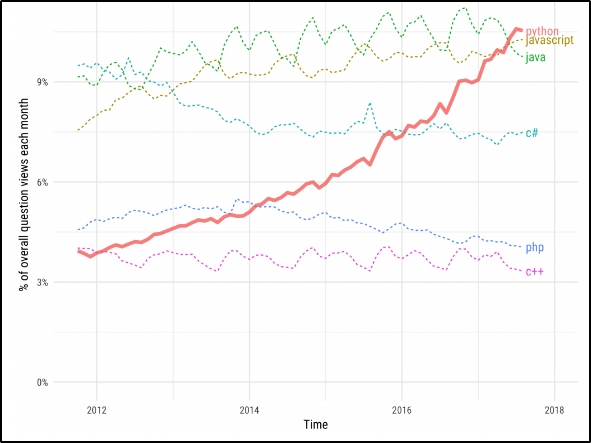WHY Python?
What is Python?
Features of Python
Jumping to the Python Basics
Comments
Variables
Data Types
Type Conversion
Operators
Namespacing and Scopes
Flow Control
if, elif, else
for, while, nested loops
File Handling
OOPS with Python
Let’s get started.
Python in simple words is a High-Level Dynamic Programming Language which is interpreted. Guido van Rossum , the father of Python had simple goals in mind when he was developing it, easy looking code, readable and open source. Python is ranked as the 3rd most prominent language followed by JavaScript and Java in a survey held in 2018 by Stack Overflow which serves proof to it being the most growing language.

Python is currently my favorite and most preferred language to work on because of its simplicity, powerful libraries, and readability. You may be an old school coder or may be completely new to programming, Python is the best way to get started!
Python is currently my favorite and most preferred language to work on because of its simplicity, powerful libraries, and readability. You may be an old school coder or may be completely new to programming, is the best way to get started!
Python provides features listed below :
Simplicity: Think less of the syntax of the language and more of the code.
Open Source: A powerful language and it is free for everyone to use and alter as needed.
Portability: Python code can be shared and it would work the same way it was intended to. Seamless and hassle-free.
Being Embeddable & Extensible: Python can have snippets of other languages inside it to perform certain functions.
Being Interpreted: The worries of large memory tasks and other heavy CPU tasks are taken care of by Python itself leaving you to worry only about coding.
Huge amount of libraries: Data Science Python has you covered. Web Development? Python still has you covered. Always.
Object Orientation: Objects help breaking-down complex real-life problems into such that they can be coded and solved to obtain solutions.
To sum it up, Python has a simple syntax, is readable, and has great community support. You may now have the question, What can you do if you know Python? Well, you have a number of options to choose from.
Data Scientist
Machine Learning and Artificial Intelligence
Internet of Things
Web Development
Data Visualization
Automation
Now when you know that Python has such an amazing feature set, why don’t we get started with the Python Basics?
To get started off with the Python Basics, you need to first install Python in your system right? So let’s do that right now! You should know that most Linux and Unix distributions these days come with a version of Python out of the box. To set yourself up, you can follow this
Install PythonLast updated